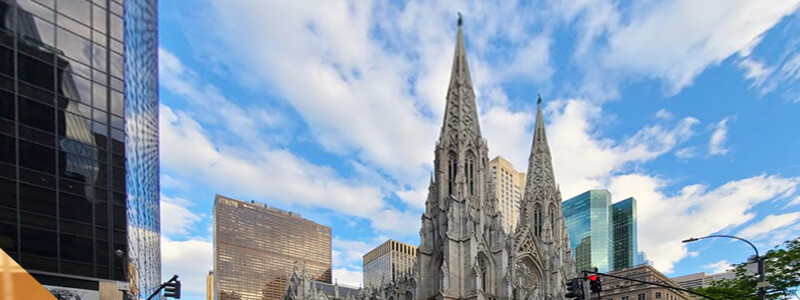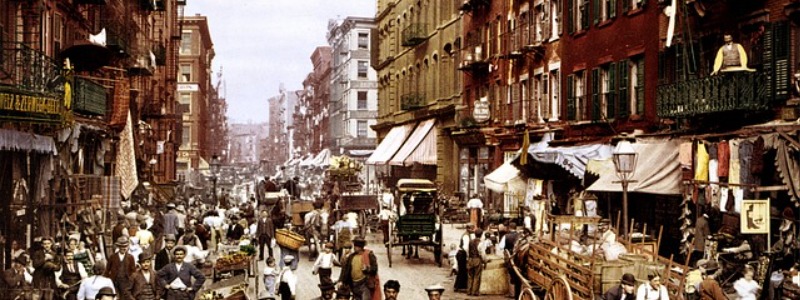Mulberry Street is a thoroughfare that cuts through the heart of Manhattan’s historic Little Italy district. This street includes a museum that preserves the history of Italian immigrants who once thrived in the area. Held each year since 1926, the Feast of San Gennaro is the biggest event that’s held on Mulberry Street. Click to book your Taste of Mulberry Street walking tour.
Mulberry Street Attractions
Perhaps the most famous section of Mulberry Street is bound by Hester Street and Grand Street. This small stretch was once considered the heart of the vibrant Little Italy district. Today, authentic Italian restaurants and cafes line this span of the historic thoroughfare. From pizza and pasta to Alfredo and scampi, delicious items are on the menus of these establishments that offer outdoor and indoor dining in casual settings.
Quite appropriately, the Italian American Museum stands at the corner of Mulberry Street and Grand Street. As you’d expect, this museum hosts exhibits on the history of Little Italy and Americans of Italian heritage. The collection at the museum mostly consists of original documents, photographs, and other printed records of Italian immigrants in New York City. Some of the images and multimedia presentations show the hustle and bustle of Mulberry Street in the late 19th century and early 20th century.
As you take a walking tour on Mulberry Street, you’ll notice several other historic landmarks that highlight the strong Italian influence on the neighborhood. Opened in 1815, St. Patrick’s Old Cathedral is one of the oldest remaining Catholic places of worship in The Big Apple. This Gothic Revival landmark still retains many of its original architectural features inside and on the facade. For example, the interior includes stunning vaults and stained-glass windows that are inspired by basilicas in Italy.

Another prominent architectural masterpiece on Mulberry Street is the Puck Building. Overlooking Houston Street, this edifice was built in the 1880s in the Romanesque Revival style. The property is decorated with a gilded installation of Puck, a fictional character from English folklore. Additionally, many of the former tenements on Mulberry Street have been converted into shops, restaurants, and other commercial units.
History
As immigrants from Italy arrived in New York City in the late 19th century, they settled in tenements on and around Mulberry Street. By the end of the century, the street had become the heart and soul of Little Italy. Pushcart vendors, outdoor markets, and corner shops lined this busy thoroughfare in Lower Manhattan.
However, the street also had its fair share of urban problems because of overcrowding. The famous journalist Jacob Riis took some iconic photographs that captured the positive and negative aspects of Mulberry Street. Taken in 1888, the “Bandit’s Roost” photo epitomizes the crime and other horrible conditions that plagued the street for decades. After World War II, Mulberry Street lost much of its Italian-American population due to suburban sprawl.
Location and Transportation
Situated in one of the most densely developed parts of Lower Manhattan, Mulberry Street is easily accessible by various forms of public and private transportation. Some New York City Subway stations that offer convenient access to this historic thoroughfare include Spring Street, Broadway-Lafayette Street, and Prince Street.
Because of its relatively narrow layout, Mulberry Street doesn’t have stops that are reserved for Metropolitan Transportation Authority (MTA) buses. This road accommodates one-way traffic heading northbound for its entire span. Broome Street, Hester Street, Canal Street and Houston Street are important roads that intersect Mulberry Street.
Overall, this well-established street has a pedestrian-friendly layout that can be traced back to the late 19th century. If you’d like to navigate the area by bicycle, take advantage of the Citi Bike program, which allows you to pick up and drop off rentals at designated spots throughout NYC.

